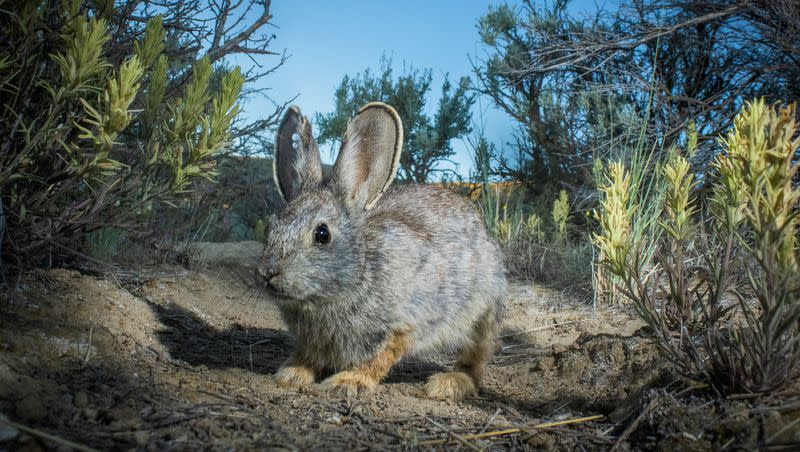World’s smallest rabbit, which lives in Utah and the West, may get help

The smallest rabbit in the world, which barely weighs a pound, may get federal protections from the U.S. Fish and Wildlife Service due to its dwindling numbers across the West, including in Utah.
Environmental and conservation groups filed a petition with the federal agency, which agreed to review the document for potential action.
“It’s never ‘good news’ that species are found to be at risk of extinction, but we’re pleased that the pygmy rabbit is getting the attention it deserves from the U.S. Fish and Wildlife Service and we’re optimistic that federal protection can help reverse the alarming downward population trends,” said Greta Anderson, deputy director of Western Watersheds Project.
The species is threatened by livestock grazing, oil and gas extraction, invasive nonnative grasses and wildfire. Pygmy rabbits require intact sagebrush for virtually all of their winter diet and for cover from predators, according to the conservation groups. They also need areas with deep soil for constructing burrows where they shelter from predators and safeguard their babies.
The current range of the pygmy rabbit encompasses parts of Wyoming, Utah, Idaho, Nevada, Montana, Colorado, California and Oregon.
Within the past 50 years, populations of the once-common pygmy rabbits have progressively dwindled, according to state surveys. In Wyoming, their population has declined by 69% to just 15% occupancy. Utah has alarmingly low occupancy rates of just 7% to 13%; occupancy rates average 23% in Idaho and 22% in Nevada, according to the groups.
The survival of the rabbits is directly tied to a loss of habitat in the sagebrush steppe ecosystem.
An estimated 1.3 million acres of that landscape are lost every year, with just 13.6% of the original ecosystem still ecologically intact, according to a recent U.S. Geological Survey report. The rabbits are also falling victim to a deadly virus.
“This is a great first step toward protecting the tiny but mighty pygmy rabbit and the habitat it needs to survive,” said Randi Spivak, public land policy director at the Center for Biological Diversity. “The once vast sagebrush sea ecosystem is facing a triple whammy of accelerated climate change, agriculture and industrial development. Endangered Species Act protection is desperately and urgently needed to save these wondrous little creatures.”
Pygmy rabbits, unlike other rabbits, dig burrows, which are around three inches in diameter. According to the Utah Division of Wildlife Resources, the burrows may have multiple entrances.
The Western Watersheds Project, Defenders of Wildlife, WildEarth Guardians and the Center for Biological Diversity petitioned the federal government nearly a year ago, asking for the review.
Related

